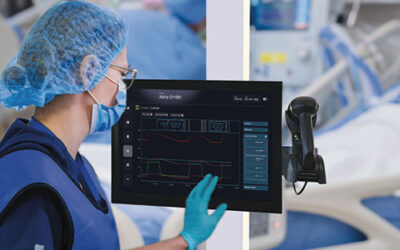What Post-Acute Care Facilities Need to Know About Implementing Telehealth Device Technology
From improving access to physicians to raising the quality of care, telehealth technology is fundamentally changing how we handle healthcare. Maximizing these benefits, however, can be difficult, especially for post-acute care facilities.
Utilizing telehealth means more than just the digitization of services. The successful implementation of telemedicine also relies on some adjustments to existing workflows. A tall order, as change management in healthcare is rarely easy — especially within the context of managing the health and safety of others.
Remote providers accessed through telemedicine technology may not be familiar faces for the on-site care team if they are leveraging outside physician service providers for their night or weekend coverage. This can foster skepticism around their ability to treat patients. Beyond that, post-acute care staff is faced with a variety of logistical unknowns when it comes to implementing new forms of telehealth.
Overcoming these challenges relies on effective change management in healthcare facilities. But this effort pays off when facilities can utilize telemedicine devices beyond the likes of videoconferencing. Medical device integration, for one, enables remote clinical examination of high-risk individuals at their time of medical need to avoid exacerbation and hospital readmissions.

Ensuring the Successful Future of Telemedicine
Maximizing the benefits of telemedicine equipment depends on choosing the right devices to suit your facility’s needs as well as training staff on both how to use the equipment and why it’s beneficial. Smart investment in telemedicine devices and platforms can support your operations in several ways:
1. Improved clinical outcomes
Integrating medical devices into virtual visits gives a clearer, data-driven picture of what’s going on with patients. Access to live vital capture and monitoring, ultrasound images, and the like allow for better remote diagnosing. No matter where they are located, practitioners can still confidently put together a treatment plan based on clinical data from the patient’s bedside, leveraging connected telemedicine devices. This also has a major impact on clinical outcomes by eliminating the need to move patients for testing, often exposing them to unnecessary stress and germs. One study found that telemedicine interventions significantly decreased mortality rates in progressive care units. The use of post-acute care technology during rehabilitation can also improve patient physical functionality.
2. Seamless integration with workflows
The No. 1 challenge reported from 54% of skilled nursing facilities is staffing. Often, employees are stretched with too little time across too many patients. Automating and streamlining the capture, collection, and documentation of gathering patients’ vitals can reduce the total time of capture to document from five to two minutes per patient and can provide team members more time to spend on direct patient care. Beyond that, platforms capable of integrating with the EMR can push and pull patient data from existing patient records and automatically capture and document it.
3. User-friendly design
Change management in healthcare is easier when using a platform that mimics the workflow of in-person experiences. A simple, easy-to-use interface coupled with familiar medical devices allows for minimal staff training. This allows clinicians to complete a patient workup in a similar fashion to what they are already familiar with.
Post-acute care technology has seen a significant shift in both use and functionality over the past couple of years, especially with telemedicine devices. You can thank the pandemic for that. But data shows that the growth of telemedicine is likely to continue well into the future as providers integrate it into the care continuum and providers and patients alike recognize compelling user experiences. According to The Chartis Group, the future of healthcare will likely entail a mix of both in-person and telehealth visits, requiring a robust digital platform to onboard and maintain patient relationships.
Want to know more about how telehealth solutions will change the future of post-acute care? Download our ROI Guide for Telemedicine in Post-Acute Care for more information on the future of telemedicine and learn about AMD’s telehealth technology solutions for post-acute care.




